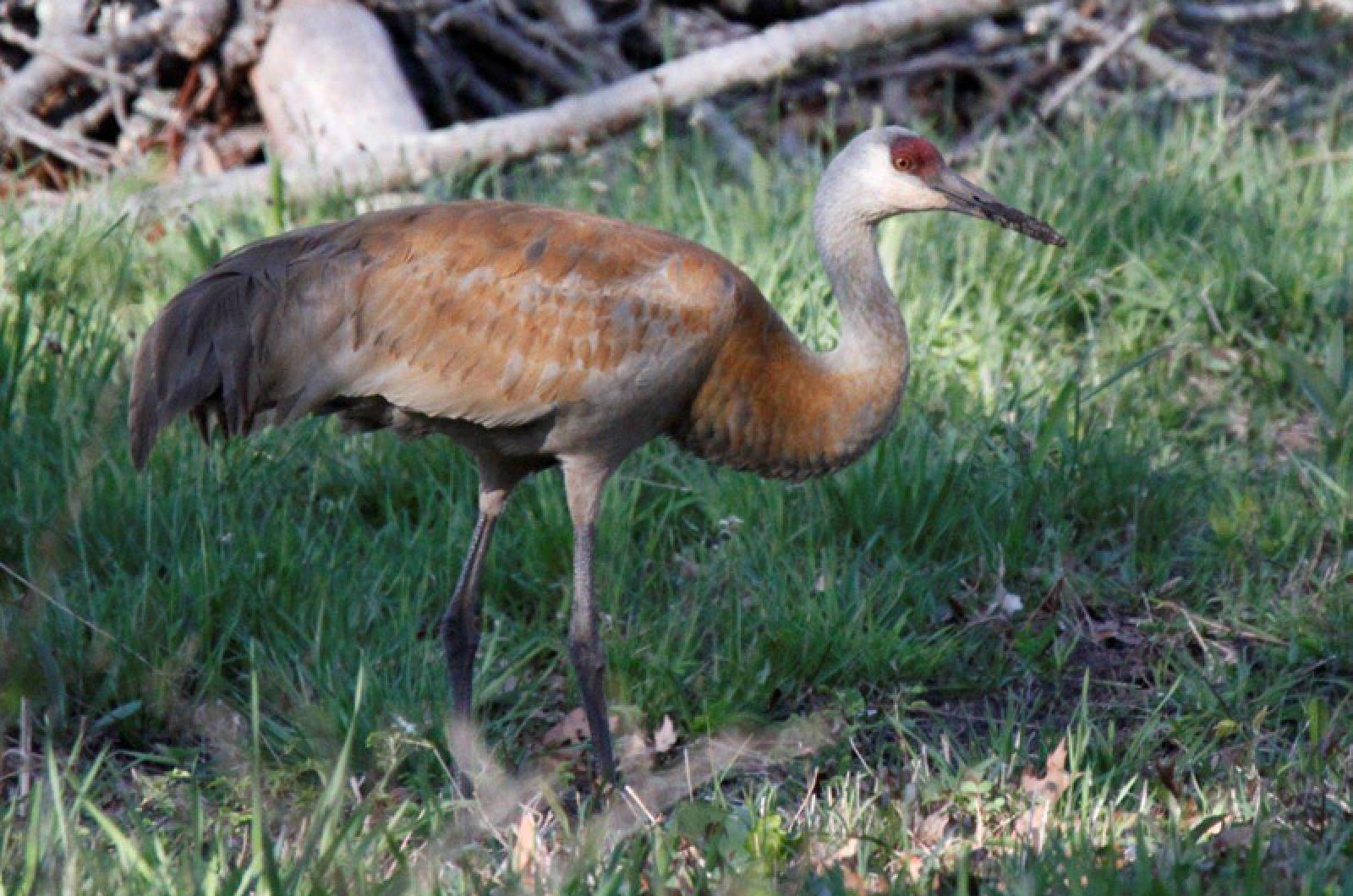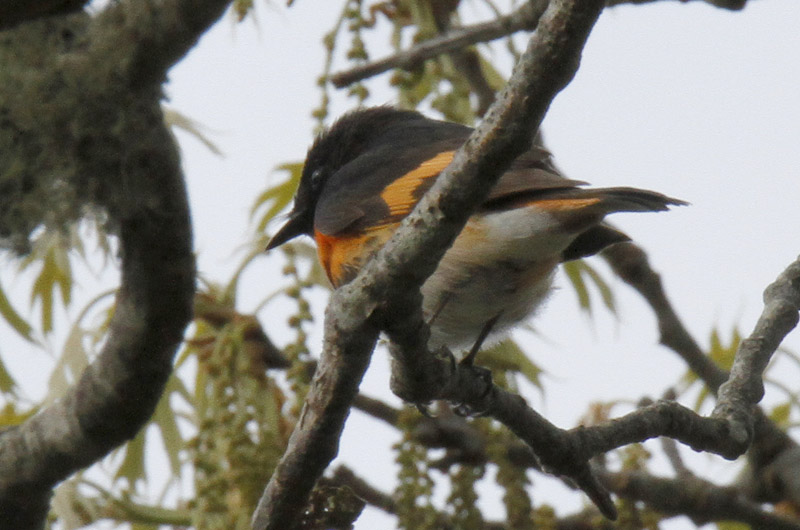The Felix Neck Bird-a-thon began at 6 p.m. on May 15 and continued until 6 p.m. on May 16. Preliminary results are that we found 125 species, although they were mostly species that either breed or spend the winter here.
The team of Soo Whiting, Flip Harrington, Allan Keith, Lanny McDowell and Ken Magnuson found some migrant warblers: blackburnian warblers (at both Squibnocket and Waskosim’s Rock), magnolia warblers and blackpolls.
The team including Whit Manter, Al Sgroi, Suzan Bellincampi and Nora Papian found an arctic tern at the big bridge on State Beach.
My crew, including Wendy Culbert, found the Chuck-will’s-widow along Dike Road on Chappaquiddick, with an assist from Hatsy Potter, who reports that she has been hearing it since April 29. We also observed a lesser black-backed gull at Wasque, and two carefully observed white-rumped sandpipers.
Some of the breeding species that were reported for the first time this year include an eastern wood-pewee, willow flycatcher, wood thrush and American redstart.
Late-staying winter residents include purple sandpiper, common eider, white-winged, surf and black scoters, both common and red-throated loons, red-breasted merganser and great cormorant.
Bird Sightings
It was another busy week in the birding world, capped off by the Bird-a-thon. Some of the highlights will be discussed here, or view a complete list of species found. By the way, donations are still being gratefully accepted!
The most notable sighting is the sandhill crane, which was first spotted by Maureen Williams at the Keith Farm in Chilmark on May 13. Numerous observers have had a chance to see this large, great blue heron sized bird on May 14 and 15. The bird-a-thon started at 6 p.m. on May 15, but the crane was not seen again until the afternoon of May 17, when both Catherine Deese and Barbara Armstrong found it at Bliss Field, which is at the Captain Flanders House on North Road, just a few crane’s-wing flaps north of the Keith Farm. This unusual sighting has created quite a buzz, with a lot of people asking if I have seen the crane. No, I have not, but seeing and hearing thousands of these cranes in Michigan, bugling as they come in to their nightly roost in the fall, is one of my favorite birding memories.
Another really fun bird is a summer tanager, spotted by Ron Domurat in a bird bath at his house in Westminster Acres in Edgartown on May 6. These shockingly red birds are hard to miss anywhere, and what a sight it was. Then, on May 13, Marianne Thomas observed one at her Ocean Heights home.
There have been several reports of a flock of four snow geese with one blue goose between May 16 and May 18. These are not wild birds. Gus Ben David has raised them, and they often fly away from his farm. Olsen Houghton spotted them at the headquarters of the State Forest, Hatsy Potter reports them from Pimpneymouse Farm on Chappaquiddick, and Ken Magnuson observed them at the Edgartown Golf Club. As these geese are full-winged, and they have recently been departing from Mr. Ben David’s farm, it is a wonder that they have not been seen more frequently. Some day these birds may join their wild cousins and head north to breed before returning to the Vineyard every winter.
Nora Papian found a saltmarsh sparrow in the salt marsh at Felix Neck on May 17. Although they breed here, it is always a good bird to find as they are so secretive and their voice is almost inaudible. It is nice to have a species whose name so accurately describes where it lives.
Speaking of secretive, Sharon Simonin was photographing a great egret on May 16. When the photo was posted on Facebook’s Martha’s Vineyard Bird Alert, Matt Pelikan discovered that there was also a short-billed dowitcher in the photo. Surprise.
Larry Hepler has had both Baltimore orioles and ruby-throated hummingbirds at his feeder.
Black skimmers are striking birds. Daniel de Castro was startled to see a flock of six skimmers feeding at Eel Pond on May 19. To feed, they drag their lower mandible through the water, snapping their bill closed when they detect something other than water. Since they breed on nearby Little Beach, their unique feeding behavior can be regularly observed from the boat launch ramp located at the end of Pease’s Point Way.
Nancy Weaver observed and photographed (using binoculars and cell phone camera) the first young killdeer of the year on May 19. Chicks start running around within a few hours of hatching, and this several-day-old chick is climbing out from underneath one of its parents.
A catbird is still serenading me as I write this at 8:10 on the evening of May 18. Makes for a long day, as they are up maybe a bit before sunrise at 5:20.
There are lots of birds around, so please get out looking for them, and be sure to report your bird sightings to birds@mvgazette.com
Robert Culbert leads guided birding tours and is an ecological consultant living in Vineyard Haven.





Comments
Comment policy »